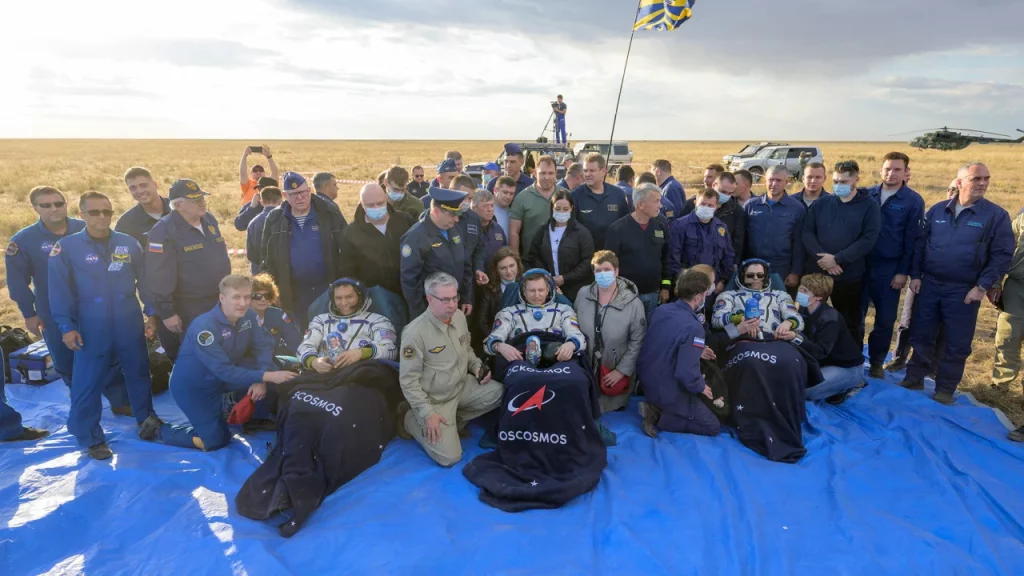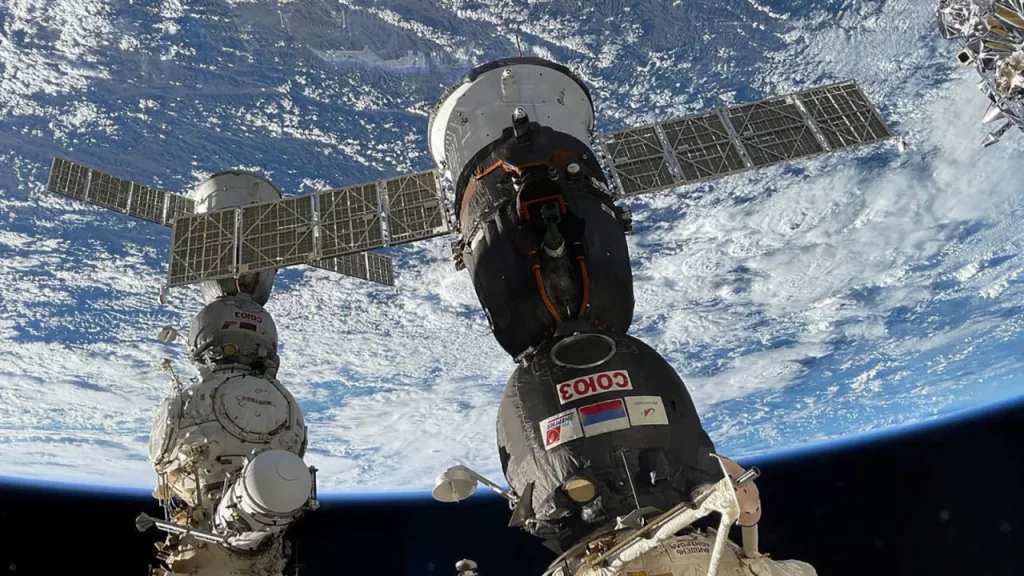After an extraordinary journey, NASA astronaut Frank Rubio, who achieved a record-breaking stay in space, has returned to Earth, reconnecting with the planet’s gravitational embrace after more than a year away.
Rubio, accompanied by his Russian counterparts, cosmonauts Sergey Prokopyev and Dmitri Petelin, descended to Earth via the Russian Soyuz MS-23 capsule, touching down in Kazakhstan at 5:17 p.m. local time (7:17 AM ET) on Wednesday.
This homecoming marked the conclusion of an unexpectedly extended mission for Rubio, initially slated for a six-month stay aboard the International Space Station. However, due to the discovery of a coolant leak in his original spacecraft while docked at the space station, he spent 371 days in space.

Rubio’s remarkable sojourn not only set a new record for the most extended duration a US astronaut has ever spent in microgravity but also made him the first American to complete an entire calendar year in orbit.
Numerous firsts marked this mission for Rubio, as it was his maiden voyage to space since his selection for the NASA astronaut corps in 2017. At the task’s start, he also became the first astronaut of Salvadoran heritage to journey to low-Earth orbit.
In a recent interview with CNN, Rubio admitted that had he known his mission would be twice as long as initially planned, he might have declined due to significant family commitments.
With four children awaiting his return, Rubio is expected to commence his journey home from the Soyuz spacecraft’s landing site near Dzhezkazgan in Kazakhstan. His itinerary includes a flight to Karaganda, situated approximately 330 miles (530 kilometers) northeast of Dzhezkazgan before he boards a flight to Houston.
In total, Rubio and his fellow crew members traversed an astounding 157.4 million miles (253.3 million kilometers) and completed 5,963 orbits around the Earth, according to NASA.
Rubio surpassed the previous record for the most extended space stay by a US astronaut, previously held by NASA’s Mark Vande Hei, who spent 355 days in space in 2022. The world record for the longest continuous stay in space is the late Russian cosmonaut Valeri Polyakov, who spent 437 days aboard Russia’s Mir space station from January 1994 to March 1995.
US and Russian cooperation in space
Rubio’s journey to the space station was facilitated through a ride-sharing agreement between NASA and Roscosmos, the Russian space agency, which was negotiated in the summer of 2022 amidst Russia’s invasion of Ukraine. This arrangement involved swapping seats on spacecraft and was designed to uphold a longstanding policy ensuring access to the space station for both the United States and Russia, the primary operators of the station. This approach aimed to mitigate the impact of spacecraft issues that might ground astronauts from either country.
Also Read: Norway’s Ban on Russian-Registered Passenger Cars Starting Oct. 3
Rubio, Prokopyev, and Petelin embarked on their mission aboard the Soyuz MS-22 vehicle on September 21, 2022. They safely reached the ISS three hours later, leaving the Soyuz capsule docked to the space station’s exterior as they commenced their work on the orbiting laboratory.
In a recent interview with reporters, Rubio expressed his gratitude to his family, acknowledging that their resilience and strength had supported his entire mission.
Increasing risk from space debris
Less than three months into the crew’s mission, the Soyuz MS-22 spacecraft began experiencing coolant leakage. Investigations conducted by Roscosmos, later reviewed by NASA, revealed that the spacecraft had likely been impacted by a small object while in orbit. The responsible party was identified as a micrometeorite or a fragment of orbital debris, highlighting the increasing hazard posed by the crowded environment of low-Earth orbit.
Recognizing that the Soyuz MS-22 was no longer suitable for returning the astronauts to Earth, Roscosmos promptly launched a replacement vehicle, the Soyuz MS-23, in February.

However, Rubio and his fellow crew members were unable to return home. Authorities determined that they would extend their stay in orbit while Roscosmos prepared for yet another Soyuz capsule launch to bring in a fresh crew to replace them.
Space station crew rotation
The Soyuz MS-24 spacecraft, prepared and launched this month, carried NASA astronaut Loral O’Hara and Roscosmos cosmonauts Oleg Kononenko and Nikolai Chub to the space station on September 15. This mission paved the way for Rubio’s return on Wednesday.
Rubio, a medical doctor and military helicopter pilot with over 600 hours of combat experience, acknowledged that he won’t immediately resume his pre-spaceflight life upon returning due to the effects that extended periods in microgravity can have on the body.
“We’re not walking, we’re not bearing our own weight (while in space), and so it’ll be anywhere from two to six months before I essentially say that I feel normal,” he explained.
Nonetheless, there are numerous earthly experiences he is eagerly anticipating: “Up here, we kind of have the constant hum of machinery that’s keeping us alive,” he noted during an interview from space. “And so I’m looking forward to just being outside and enjoying the peace and quiet.”

